What you’ll learn to do: identify and describe the parts of the brain
In this section, you’ll learn about the specific parts of the brain and their roles and functions. While this is not an anatomy class, you’ll see how important it is to understand the parts of the brain and what they do so that we can understand mental processes and behavior. Watch this CrashCourse Psychology video for an overview on the brain and the interesting topics we’ll cover:
Learning Objectives
- Explain the two hemispheres of the brain, lateralization and plasticity
- Identify the location and function of the lobes of the brain
The Central Nervous System
The central nervous system (CNS), consists of the brain and the spinal cord.
The Brain
The brain is a remarkably complex organ comprised of billions of interconnected neurons and glia. It is a bilateral, or two-sided, structure that can be separated into distinct lobes. Each lobe is associated with certain types of functions, but, ultimately, all of the areas of the brain interact with one another to provide the foundation for our thoughts and behaviors.
The Spinal Cord
It can be said that the spinal cord is what connects the brain to the outside world. Because of it, the brain can act. The spinal cord is like a relay station, but a very smart one. It not only routes messages to and from the brain, but it also has its own system of automatic processes, called reflexes.
The top of the spinal cord merges with the brain stem, where the basic processes of life are controlled, such as breathing and digestion. In the opposite direction, the spinal cord ends just below the ribs—contrary to what we might expect, it does not extend all the way to the base of the spine.
The spinal cord is functionally organized in 30 segments, corresponding with the vertebrae. Each segment is connected to a specific part of the body through the peripheral nervous system. Nerves branch out from the spine at each vertebra. Sensory nerves bring messages in; motor nerves send messages out to the muscles and organs. Messages travel to and from the brain through every segment.
Some sensory messages are immediately acted on by the spinal cord, without any input from the brain. Withdrawal from heat and knee jerk are two examples. When a sensory message meets certain parameters, the spinal cord initiates an automatic reflex. The signal passes from the sensory nerve to a simple processing center, which initiates a motor command. Seconds are saved, because messages don’t have to go the brain, be processed, and get sent back. In matters of survival, the spinal reflexes allow the body to react extraordinarily fast.
The spinal cord is protected by bony vertebrae and cushioned in cerebrospinal fluid, but injuries still occur. When the spinal cord is damaged in a particular segment, all lower segments are cut off from the brain, causing paralysis. Therefore, the lower on the spine damage is, the fewer functions an injured individual loses.
The Two Hemispheres
The surface of the brain, known as the cerebral cortex, is very uneven, characterized by a distinctive pattern of folds or bumps, known as gyri (singular: gyrus), and grooves, known as sulci (singular: sulcus), shown in Figure 1. These gyri and sulci form important landmarks that allow us to separate the brain into functional centers. The most prominent sulcus, known as the longitudinal fissure, is the deep groove that separates the brain into two halves or hemispheres: the left hemisphere and the right hemisphere.

Figure 1. The surface of the brain is covered with gyri and sulci. A deep sulcus is called a fissure, such as the longitudinal fissure that divides the brain into left and right hemispheres. (credit: modification of work by Bruce Blaus)
There is evidence of some specialization of function—referred to as lateralization—in each hemisphere, mainly regarding differences in language ability. Beyond that, however, the differences that have been found have been minor. What we do know is that the left hemisphere controls the right half of the body, and the right hemisphere controls the left half of the body.
The two hemispheres are connected by a thick band of neural fibers known as the corpus callosum, consisting of about 200 million axons. The corpus callosum allows the two hemispheres to communicate with each other and allows for information being processed on one side of the brain to be shared with the other side.
Normally, we are not aware of the different roles that our two hemispheres play in day-to-day functions, but there are people who come to know the capabilities and functions of their two hemispheres quite well. In some cases of severe epilepsy, doctors elect to sever the corpus callosum as a means of controlling the spread of seizures (Figure 2). While this is an effective treatment option, it results in individuals who have split brains. After surgery, these split-brain patients show a variety of interesting behaviors. For instance, a split-brain patient is unable to name a picture that is shown in the patient’s left visual field because the information is only available in the largely nonverbal right hemisphere. However, they are able to recreate the picture with their left hand, which is also controlled by the right hemisphere. When the more verbal left hemisphere sees the picture that the hand drew, the patient is able to name it (assuming the left hemisphere can interpret what was drawn by the left hand).

Figure 2. (a, b) The corpus callosum connects the left and right hemispheres of the brain. (c) A scientist spreads this dissected sheep brain apart to show the corpus callosum between the hemispheres. (credit c: modification of work by Aaron Bornstein)
Link to Learning
This interactive animation from the Nobel Prize website walks users through the hemispheres of the brain.
Much of what we know about the functions of different areas of the brain comes from studying changes in the behavior and ability of individuals who have suffered damage to the brain. For example, researchers study the behavioral changes caused by strokes to learn about the functions of specific brain areas. A stroke, caused by an interruption of blood flow to a region in the brain, causes a loss of brain function in the affected region. The damage can be in a small area, and, if it is, this gives researchers the opportunity to link any resulting behavioral changes to a specific area. The types of deficits displayed after a stroke will be largely dependent on where in the brain the damage occurred.
Consider Theona, an intelligent, self-sufficient woman, who is 62 years old. Recently, she suffered a stroke in the front portion of her right hemisphere. As a result, she has great difficulty moving her left leg. (As you learned earlier, the right hemisphere controls the left side of the body; also, the brain’s main motor centers are located at the front of the head, in the frontal lobe.) Theona has also experienced behavioral changes. For example, while in the produce section of the grocery store, she sometimes eats grapes, strawberries, and apples directly from their bins before paying for them. This behavior—which would have been very embarrassing to her before the stroke—is consistent with damage in another region in the frontal lobe—the prefrontal cortex, which is associated with judgment, reasoning, and impulse control.
Link to Learning
Watch this video to see an incredible example of the challenges facing a split-brain patient shortly following the surgery to sever her corpus callosum.
Watch this second about another patient who underwent a dramatic surgery to prevent her seizures. You’ll learn more about the brain’s ability to change, adapt, and reorganize itself, also known as brain plasticity.
Try It
Forebrain Structures

Figure 3. The brain and its parts can be divided into three main categories: the forebrain, midbrain, and hindbrain.
Lobes of the Brain
The four lobes of the brain are the frontal, parietal, temporal, and occipital lobes (Figure 4). The frontal lobe is located in the forward part of the brain, extending back to a fissure known as the central sulcus. The frontal lobe is involved in reasoning, motor control, emotion, and language. It contains the motor cortex, which is involved in planning and coordinating movement; the prefrontal cortex, which is responsible for higher-level cognitive functioning; and Broca’s area, which is essential for language production.
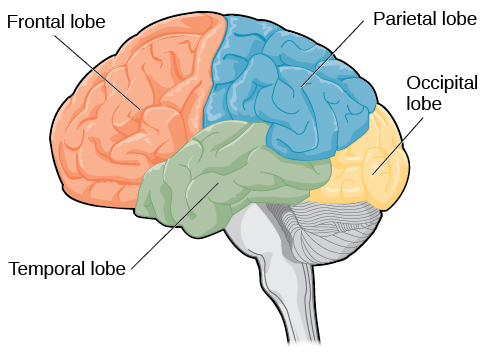
Figure 4. The lobes of the brain are shown.
People who suffer damage to Broca’s area have great difficulty producing language of any form. For example, Padma was an electrical engineer who was socially active and a caring, involved mother. About twenty years ago, she was in a car accident and suffered damage to her Broca’s area. She completely lost the ability to speak and form any kind of meaningful language. There is nothing wrong with her mouth or her vocal cords, but she is unable to produce words. She can follow directions but can’t respond verbally, and she can read but no longer write. She can do routine tasks like running to the market to buy milk, but she could not communicate verbally if a situation called for it.
Try It
Probably the most famous case of frontal lobe damage is that of a man by the name of Phineas Gage. On September 13, 1848, Gage (age 25) was working as a railroad foreman in Vermont. He and his crew were using an iron rod to tamp explosives down into a blasting hole to remove rock along the railway’s path. Unfortunately, the iron rod created a spark and caused the rod to explode out of the blasting hole, into Gage’s face, and through his skull (Figure 5). Although lying in a pool of his own blood with brain matter emerging from his head, Gage was conscious and able to get up, walk, and speak. But in the months following his accident, people noticed that his personality had changed. Many of his friends described him as no longer being himself. Before the accident, it was said that Gage was a well-mannered, soft-spoken man, but he began to behave in odd and inappropriate ways after the accident. Such changes in personality would be consistent with loss of impulse control—a frontal lobe function.
Beyond the damage to the frontal lobe itself, subsequent investigations into the rod’s path also identified probable damage to pathways between the frontal lobe and other brain structures, including the limbic system. With connections between the planning functions of the frontal lobe and the emotional processes of the limbic system severed, Gage had difficulty controlling his emotional impulses.
However, there is some evidence suggesting that the dramatic changes in Gage’s personality were exaggerated and embellished. Gage’s case occurred in the midst of a 19th century debate over localization—regarding whether certain areas of the brain are associated with particular functions. On the basis of extremely limited information about Gage, the extent of his injury, and his life before and after the accident, scientists tended to find support for their own views, on whichever side of the debate they fell (Macmillan, 1999).
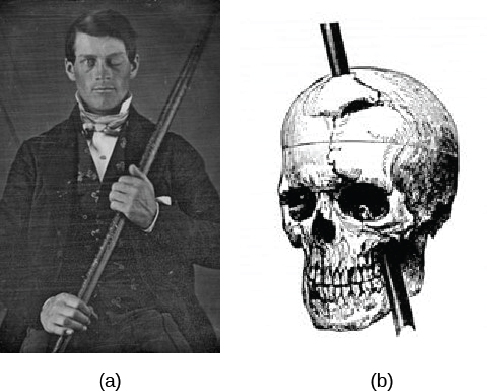
Figure 5. (a) Phineas Gage holds the iron rod that penetrated his skull in an 1848 railroad construction accident. (b) Gage’s prefrontal cortex was severely damaged in the left hemisphere. The rod entered Gage’s face on the left side, passed behind his eye, and exited through the top of his skull, before landing about 80 feet away. (credit a: modification of work by Jack and Beverly Wilgus)
Link to learning
Watch this clip about Phineas Gage to learn more about his accident and injury.
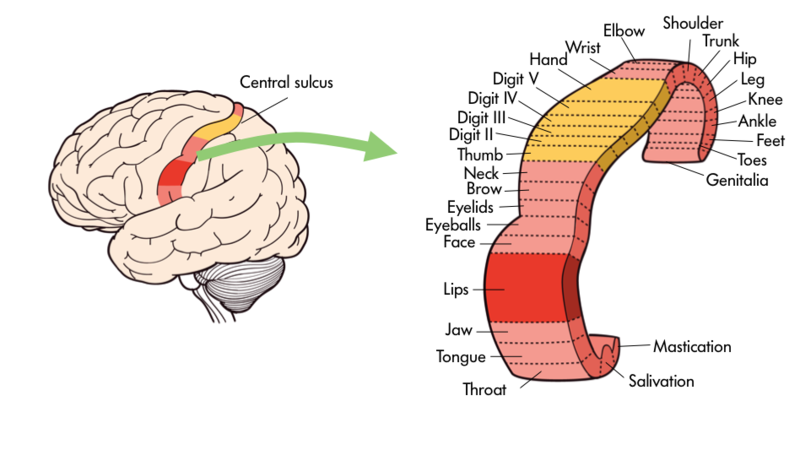
Figure 6: Specific body parts like the tongue or fingers are mapped onto certain areas of the brain including the primary motor cortex.
One particularly fascinating area in the frontal lobe is called the “primary motor cortex”. This strip running along the side of the brain is in charge of voluntary movements like waving goodbye, wiggling your eyebrows, and kissing. It is an excellent example of the way that the various regions of the brain are highly specialized. Interestingly, each of our various body parts has a unique portion of the primary motor cortex devoted to it (see Figure 6). Each individual finger has about as much dedicated brain space as your entire leg. Your lips, in turn, require about as much dedicated brain processing as all of your fingers and your hand combined!
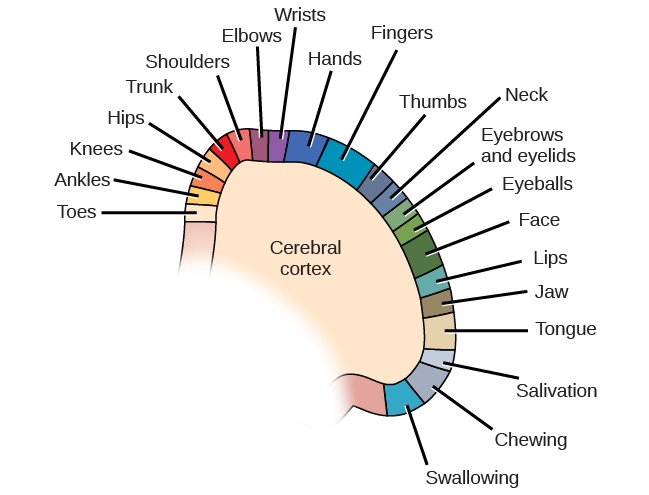
Figure 7. Spatial relationships in the body are mirrored in the organization of the somatosensory cortex.
Because the cerebral cortex in general, and the frontal lobe in particular, are associated with such sophisticated functions as planning and being self-aware they are often thought of as a higher, less primal portion of the brain. Indeed, other animals such as rats and kangaroos while they do have frontal regions of their brain do not have the same level of development in the cerebral cortices. The closer an animal is to humans on the evolutionary tree—think chimpanzees and gorillas, the more developed is this portion of their brain.
The brain’s parietal lobe is located immediately behind the frontal lobe, and is involved in processing information from the body’s senses. It contains the somatosensory cortex, which is essential for processing sensory information from across the body, such as touch, temperature, and pain. The somatosensory cortex is organized topographically, which means that spatial relationships that exist in the body are maintained on the surface of the somatosensory cortex. For example, the portion of the cortex that processes sensory information from the hand is adjacent to the portion that processes information from the wrist.
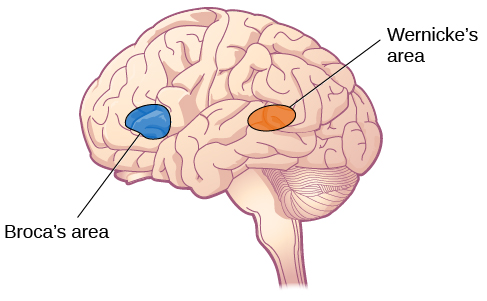
Figure 8. Damage to either Broca’s area or Wernicke’s area can result in language deficits. The types of deficits are very different, however, depending on which area is affected.
The temporal lobe is located on the side of the head (temporal means “near the temples”), and is associated with hearing, memory, emotion, and some aspects of language. The auditory cortex, the main area responsible for processing auditory information, is located within the temporal lobe. Wernicke’s area, important for speech comprehension, is also located here. Whereas individuals with damage to Broca’s area have difficulty producing language, those with damage to Wernicke’s area can produce sensible language, but they are unable to understand it (Figure 8).
The occipital lobe is located at the very back of the brain, and contains the primary visual cortex, which is responsible for interpreting incoming visual information. The occipital cortex is organized retinotopically, which means there is a close relationship between the position of an object in a person’s visual field and the position of that object’s representation on the cortex. You will learn much more about how visual information is processed in the occipital lobe when you study sensation and perception.
Try It
Food for Thought
Consider the following advice from Joseph LeDoux, a professor of neuroscience and psychology at New York University, as you learn about the specific parts of the brain:
Be suspicious of any statement that says a brain area is a center responsible for some function. The notion of functions being products of brain areas or centers is left over from the days when most evidence about brain function was based on the effects of brain lesions localized to specific areas. Today, we think of functions as products of systems rather than of areas. Neurons in areas contribute because they are part of a system. The amygdala, for example, contributes to threat detection because it is part of a threat detection system. And just because the amygdala contributes to threat detection does not mean that threat detection is the only function to which it contributes. Amygdala neurons, for example, are also components of systems that process the significance of stimuli related to eating, drinking, sex, and addictive drugs.
Try It
Glossary
auditory cortex: strip of cortex in the temporal lobe that is responsible for processing auditory information
Broca’s area: region in the left hemisphere that is essential for language production
cerebral cortex: surface of the brain that is associated with our highest mental capabilities
corpus callosum: thick band of neural fibers connecting the brain’s two hemispheres
forebrain: largest part of the brain, containing the cerebral cortex, the thalamus, and the limbic system, among other structures
frontal lobe: part of the cerebral cortex involved in reasoning, motor control, emotion, and language; contains motor cortex
gyrus (plural: gyri): bump or ridge on the cerebral cortex
hemisphere: left or right half of the brain
lateralization: concept that each hemisphere of the brain is associated with specialized functions
longitudinal fissure: deep groove in the brain’s cortex
motor cortex: strip of cortex involved in planning and coordinating movement
occipital lobe: part of the cerebral cortex associated with visual processing; contains the primary visual cortex
parietal lobe: part of the cerebral cortex involved in processing various sensory and perceptual information; contains the primary somatosensory cortex
prefrontal cortex: area in the frontal lobe responsible for higher-level cognitive functioning
somatosensory cortex: essential for processing sensory information from across the body, such as touch, temperature, and pain
sulcus (plural: sulci): depressions or grooves in the cerebral cortex
temporal lobe: part of cerebral cortex associated with hearing, memory, emotion, and some aspects of language; contains primary auditory cortex
Wernicke’s area: important for speech comprehension
Candela Citations
- Introduction. Provided by: Lumen Learning. License: CC BY: Attribution
- The Brain and Spinal Cord. Authored by: OpenStax College. Located at: http://cnx.org/contents/Sr8Ev5Og@5.49:_Io4zP0c@7/The-Brain-and-Spinal-Cord. License: CC BY: Attribution. License Terms: Download for free at http://cnx.org/content/col11629/latest/.
- Modification, adaptation, and original content. Provided by: Lumen Learning. License: CC BY: Attribution
- The Amygdala Is Not The Brains Fear Center. Authored by: Joseph LeDoux. Located at: http://thepsychreport.com/science/the-amygdala-is-not-the-brains-fear-center/. Project: The Psych Report. License: CC BY-NC-SA: Attribution-NonCommercial-ShareAlike
- Motor cortex paragraphs and image. Authored by: Robert Biswas-Diener. Provided by: Portland State University. Located at: http://nobaproject.com/modules/the-brain-and-nervous-system. Project: The Noba Project. License: CC BY-NC-SA: Attribution-NonCommercial-ShareAlike
- Meet Your Master: Getting to Know Your Brain - Crash Course Psychology #4. Provided by: CrashCourse . Located at: https://www.youtube.com/watch?v=vHrmiy4W9C0. License: Other. License Terms: Standard YouTube License
- Split Brain mpeg1video. Authored by: mrsrooboy. Located at: https://www.youtube.com/watch?v=8C8qu8FnuAo&feature=youtu.be. License: Other. License Terms: Standard YouTube License
- Brain Plasticity - the story of Jody. Authored by: Streetwisdom Billy. Located at: https://www.youtube.com/watch?v=VaDlLD97CLM&feature=youtu.be. License: Other. License Terms: Standard YouTube License
- Phineas Gage (LEGO Stop-Motion Music Video). Authored by: Brad Wray. Located at: https://www.youtube.com/watch?v=_nikOxNfjqs. License: Other. License Terms: Standard YouTube License
- brain image. Authored by: Henry Gray. Provided by: Wikimedia. Located at: https://commons.wikimedia.org/wiki/File:Lobes_of_the_brain_NL.svg. License: Public Domain: No Known Copyright

